For more than a decade, San Francisco’s Department of Public Health, in collaboration with other city agencies, has been exploring how climate change will impact the health of residents.
The agency has taken a multifaceted approach to determine which neighborhoods will be disproportionately affected by conducting heat and flood vulnerability assessments, creating community resiliency scoring systems and collaborating with local nonprofits to gather temperature and humidity data.
Those investigations have revealed that Chinatown could be particularly vulnerable during periods of extreme weather due to a range of socio-economic factors as well as the built environment. Within the neighborhood, older adults living in single-room occupancy buildings are among populations at heightened risk. Reasons for this include physiological changes related to aging and financial barriers associated with making climate-resiliency adaptations to older buildings.
The San Francisco Public Press this summer interviewed residents in single-room occupancy buildings in Chinatown about their experiences during extreme weather events in recent years. The residents, who spoke Taishanese and Cantonese, which have been translated below, described hardships they experienced and steps they took to protect themselves, and offered ideas for support that could be beneficial for them and their neighbors in the future.
As droughts, wildfires, storms, floods and other catastrophes become more frequent and aggressive, each neighborhood, city and state will face its own set of adversities and health inequities. The story of how these challenges are unfolding in Chinatown offers a glimpse into how they could play out for older residents in other climate-vulnerable places.
[Read more: “Protecting Chinatown’s Older Adults from Climate Disasters Requires More Funding, Nonprofits Say”]
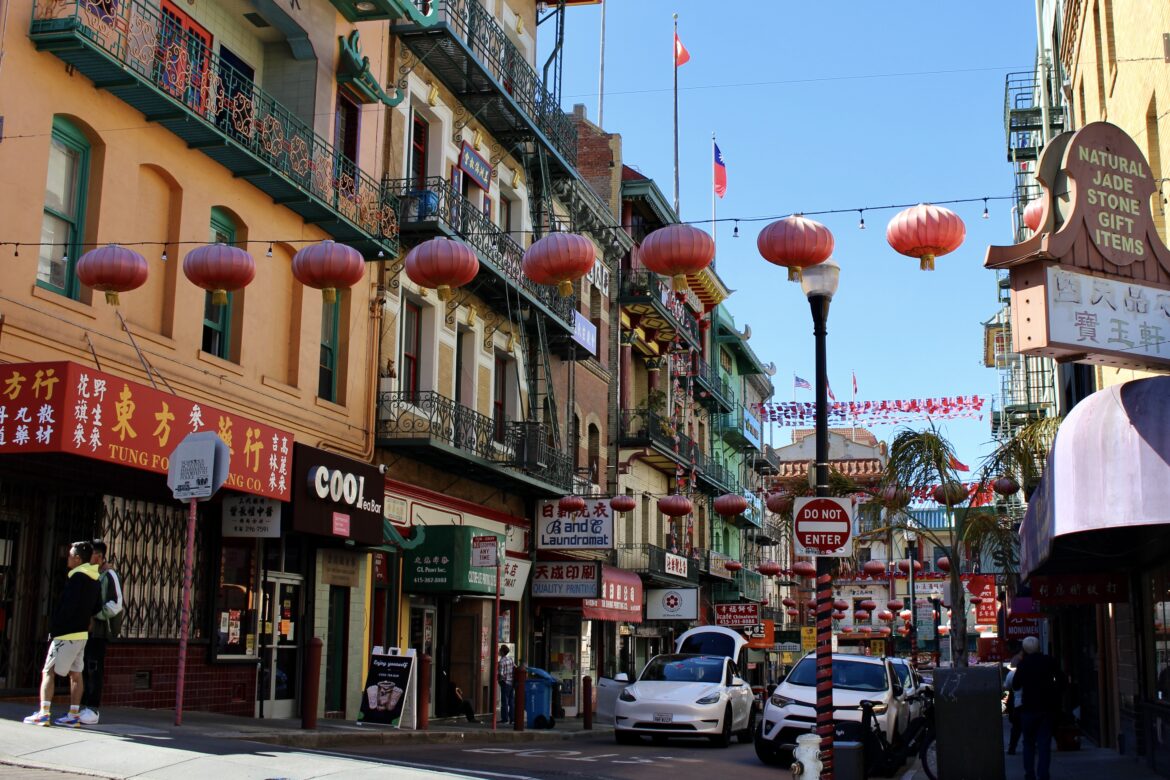
Ambika Kandasamy / San Francisco Public Press
Since the founding of San Francisco’s Chinatown, the oldest and largest in North America, its residents have experienced natural disasters that have threatened their lives and well-being. In the early years, the deadly 1906 earthquake caused widespread devastation. More recently, extreme weather conditions have caused suffering for some residents, especially those who are older and living in buildings that aren’t equipped to protect them from these hazards.
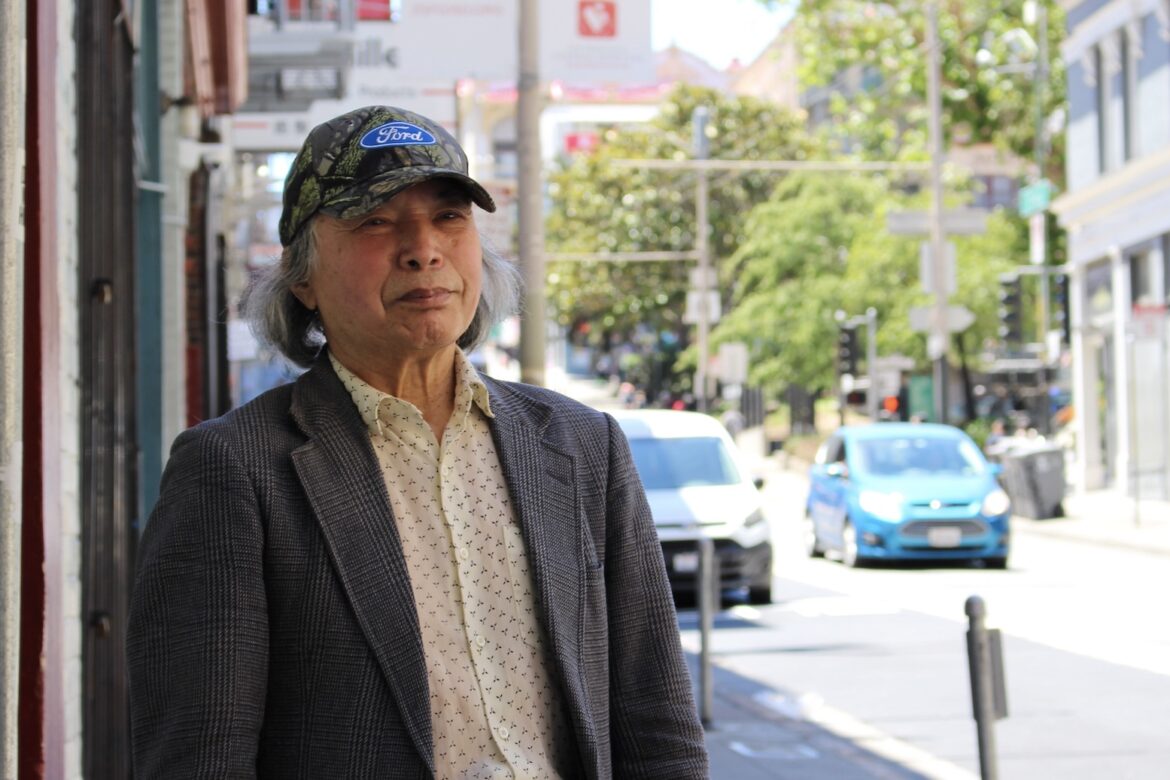
Ambika Kandasamy / San Francisco Public Press
Shao Ao Situ, 81, has been living in a single-room occupancy building in Chinatown for about 30 years. He has experienced several extreme weather events, including the wildfires in the western parts of the U.S. that engulfed San Francisco in smoke in 2020. “The wildfires and resulting haze have a significant impact, especially on us as elderly people, because they affect our respiratory system,” Situ says. He says he had eye irritation, cough and fatigue due to the toxic air.
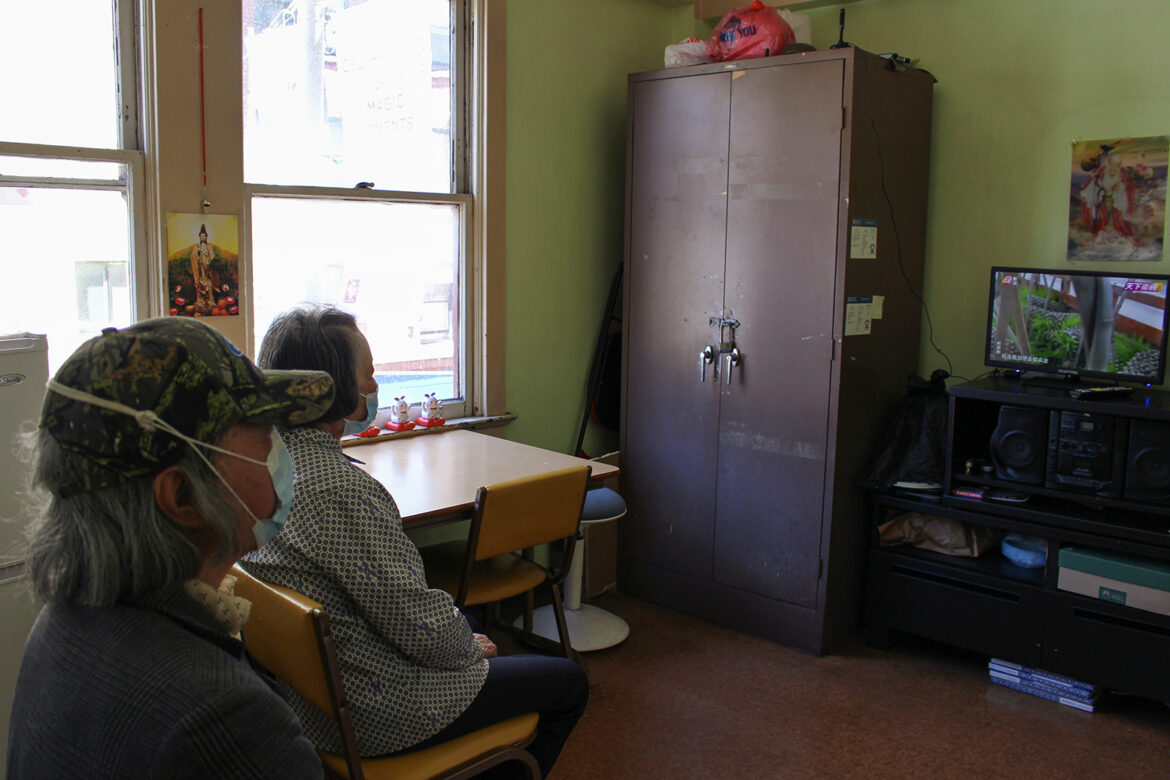
Ambika Kandasamy / San Francisco Public Press
The building where Situ lives has individual rooms for each tenant. Residents on each floor share bathrooms, laundry facilities, a kitchen and a living room. Situ often watches television with his wife in the living room. He says one strategy that city officials and community groups could adopt to educate residents about climate disasters would be to reach out to multicultural media outlets that residents typically watch, such as KTSF. “We often get information through TV,” he says. “I hope more people can share this type of knowledge there. I tend to remember information better after seeing that on TV.”
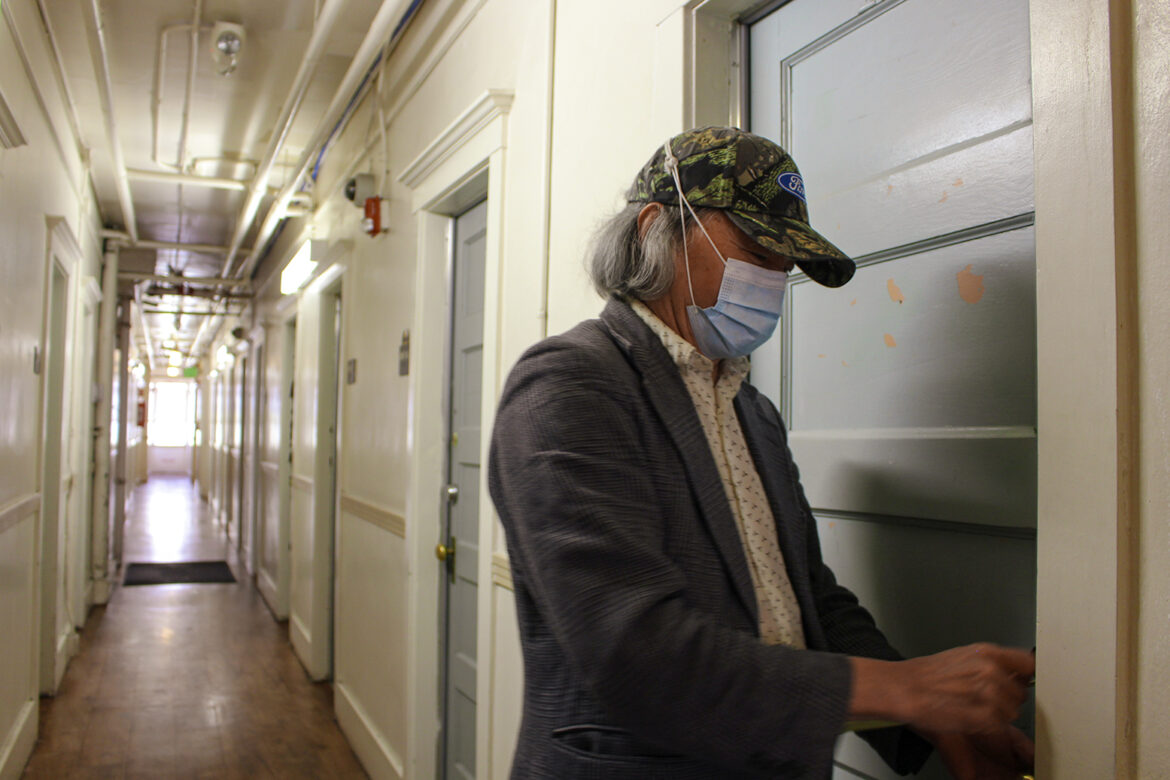
Ambika Kandasamy / San Francisco Public Press
When San Francisco was blanketed in wildfire smoke in the summer and fall of 2020, Situ says he mostly stayed indoors. He says he did not receive any support during that time or during other crises. “Where can we go for help?” he says. “We had absolutely no such advice made available to us.”
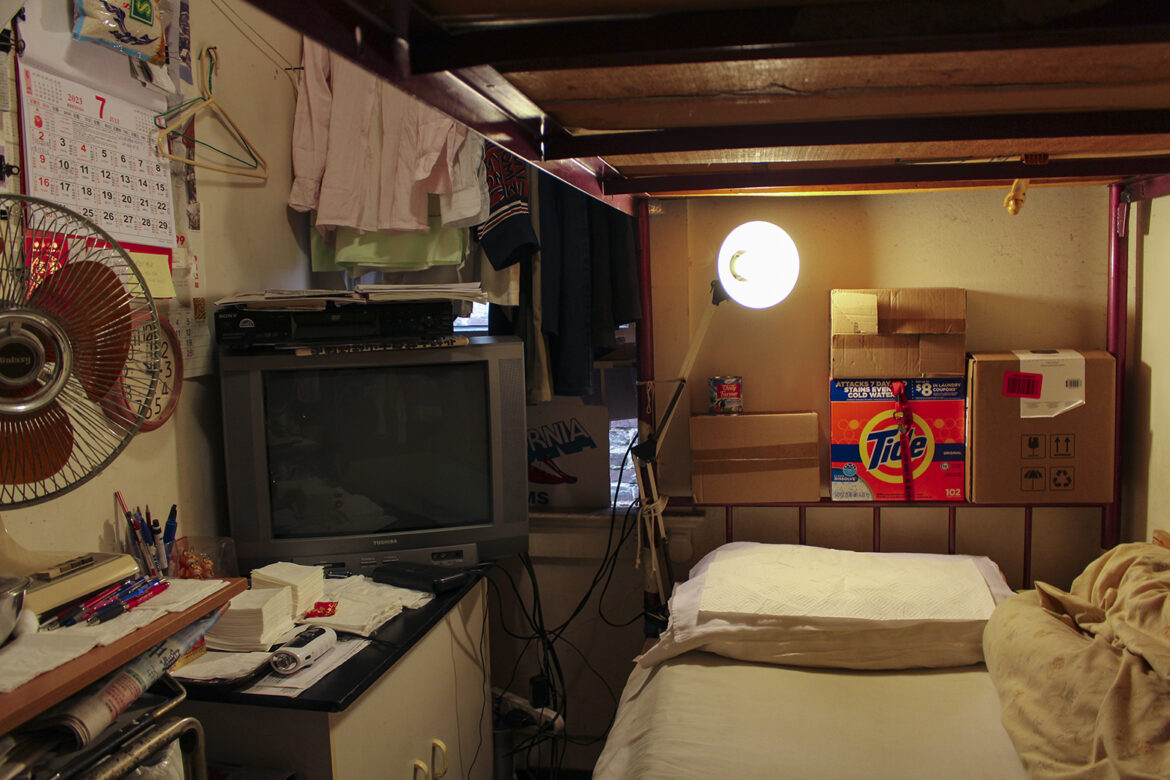
Ambika Kandasamy / San Francisco Public Press
Units in Situ’s building measure about 8 by 10 feet, which is typical for single-room occupancy buildings. Inside Situ’s room are a bunk bed, a table, a dresser and shelves holding his belongings. There is a single window where he hangs his clothes.
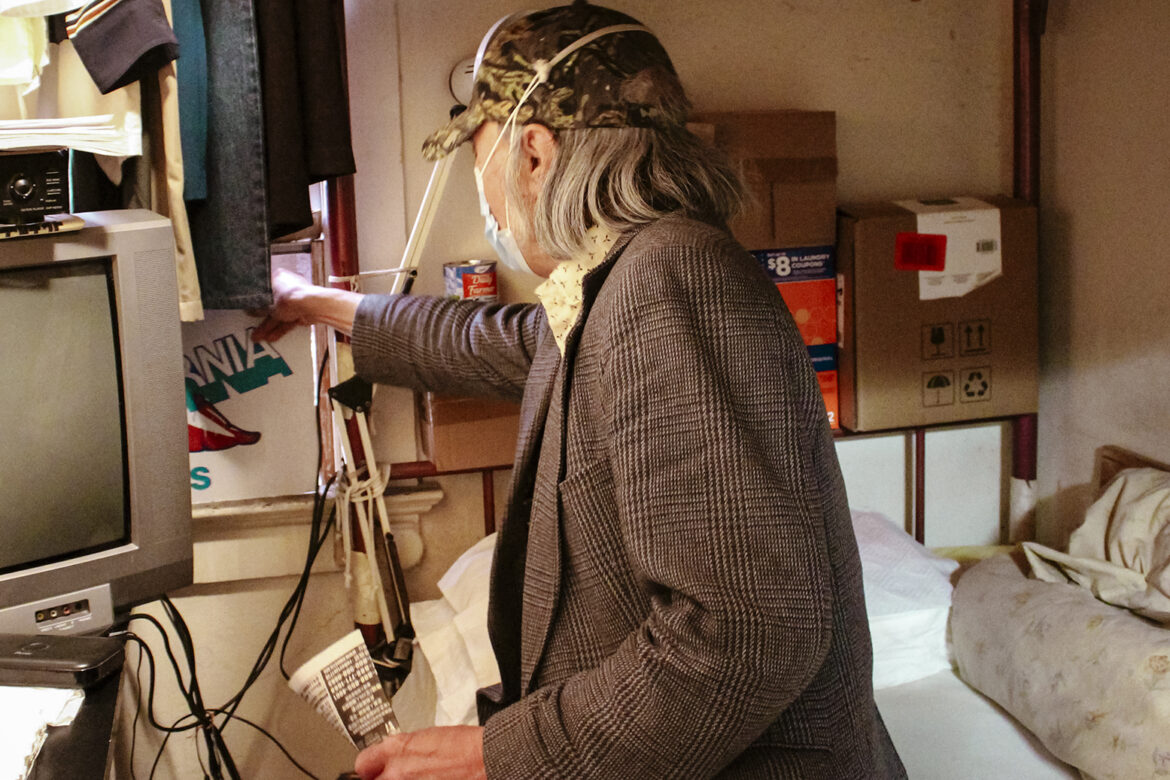
Ambika Kandasamy / San Francisco Public Press
When smoke and toxic particles from wildfires in neighboring regions drifted into San Francisco in 2020, Situ says he kept his window mostly closed, leaving a small opening for ventilation. He says he put up a piece of cardboard to cover the gap, demonstrating how he does that even today.
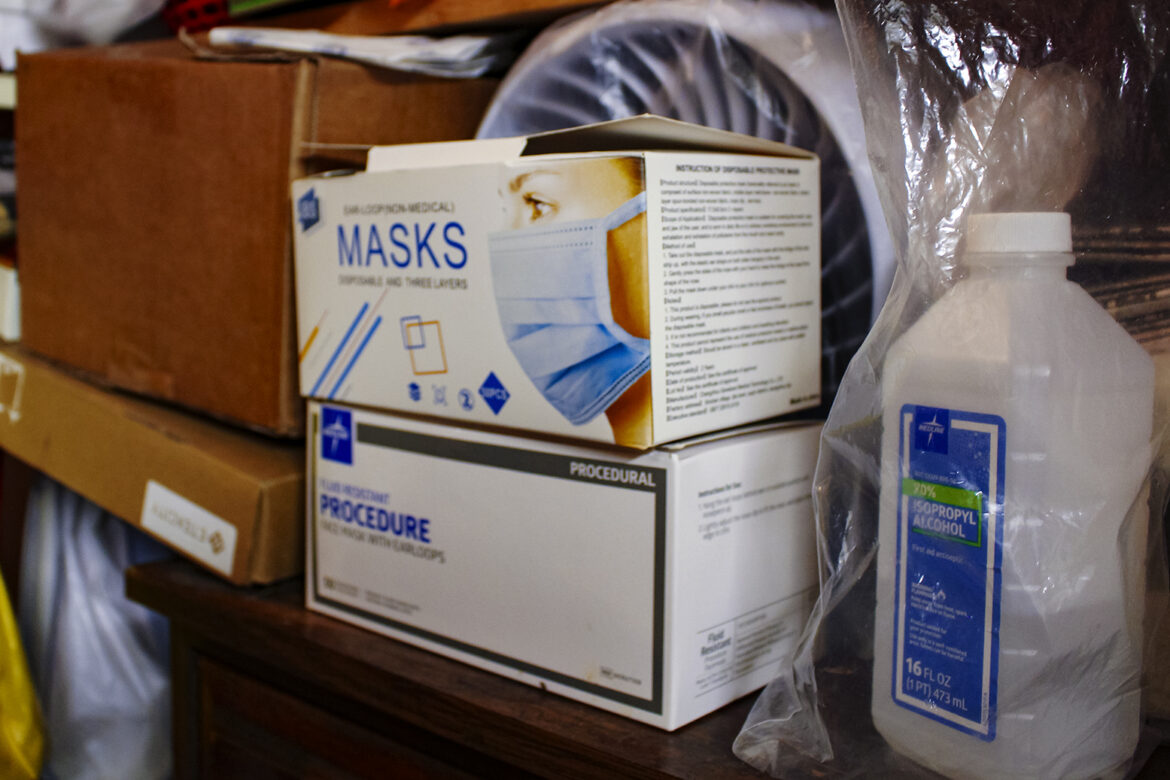
Ambika Kandasamy / San Francisco Public Press
Situ keeps a stock of surgical masks and sanitizer. During the wildfires, he says he bought N-95 masks. “I heard on TV that N-95 masks are the best at preventing dust and pollution particles, so we bought two boxes at that time,” he says. “Not with government money. We paid out of pocket. The N-95 masks were very effective.”
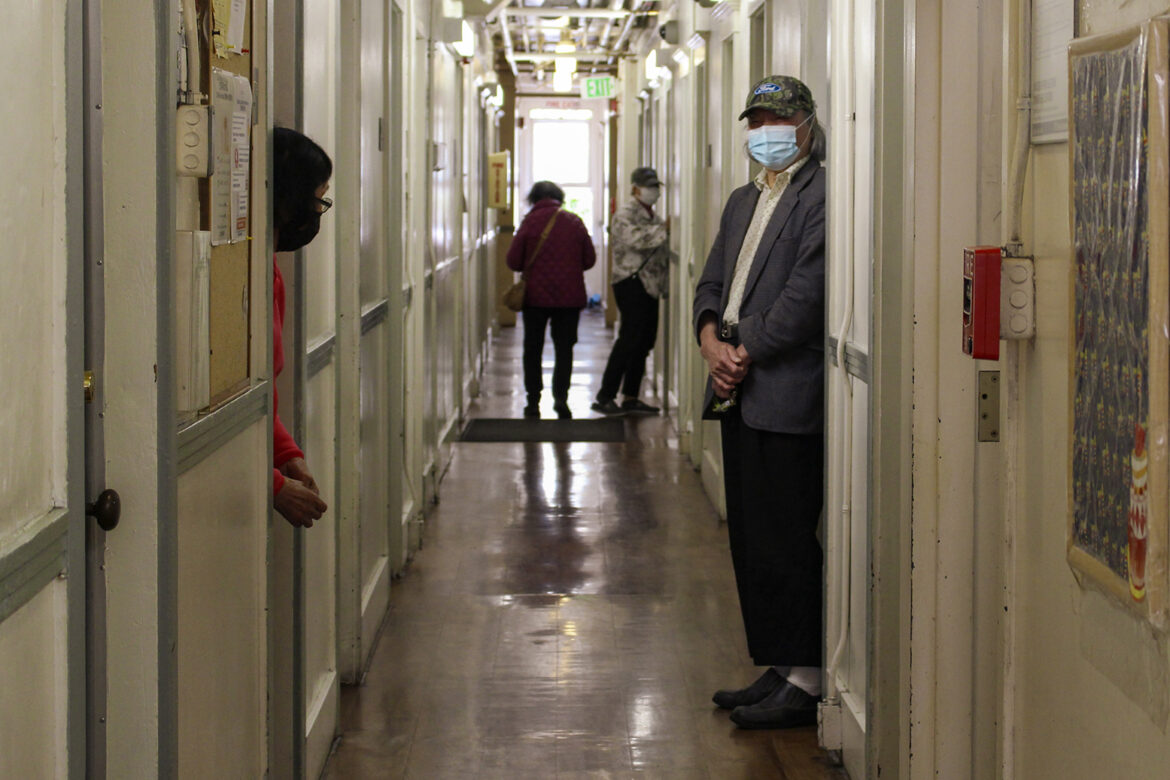
Ambika Kandasamy / San Francisco Public Press
Situ’s neighbors are also older. He says they would benefit from more education from community groups and government agencies on how to protect themselves during wildfires. “I think governments can do a better job,” Situ says. “One is publicity and guidance, such as holding lectures to introduce smoke and haze prevention matters and methods. I believe it will be of great help to residents, especially the elderly.”
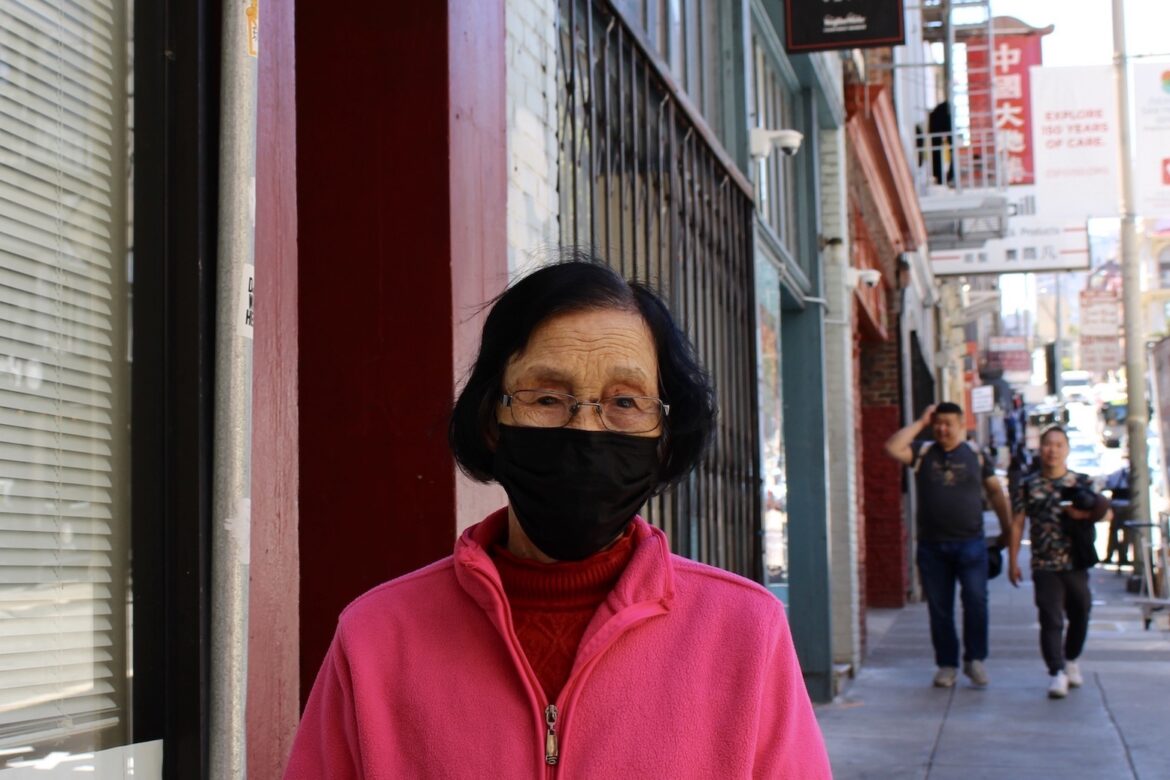
Ambika Kandasamy / San Francisco Public Press
Bifang Kuang is one of Situ’s neighbors. Kuang, 84, says she has been living in the single-room occupancy building for about 10 years.
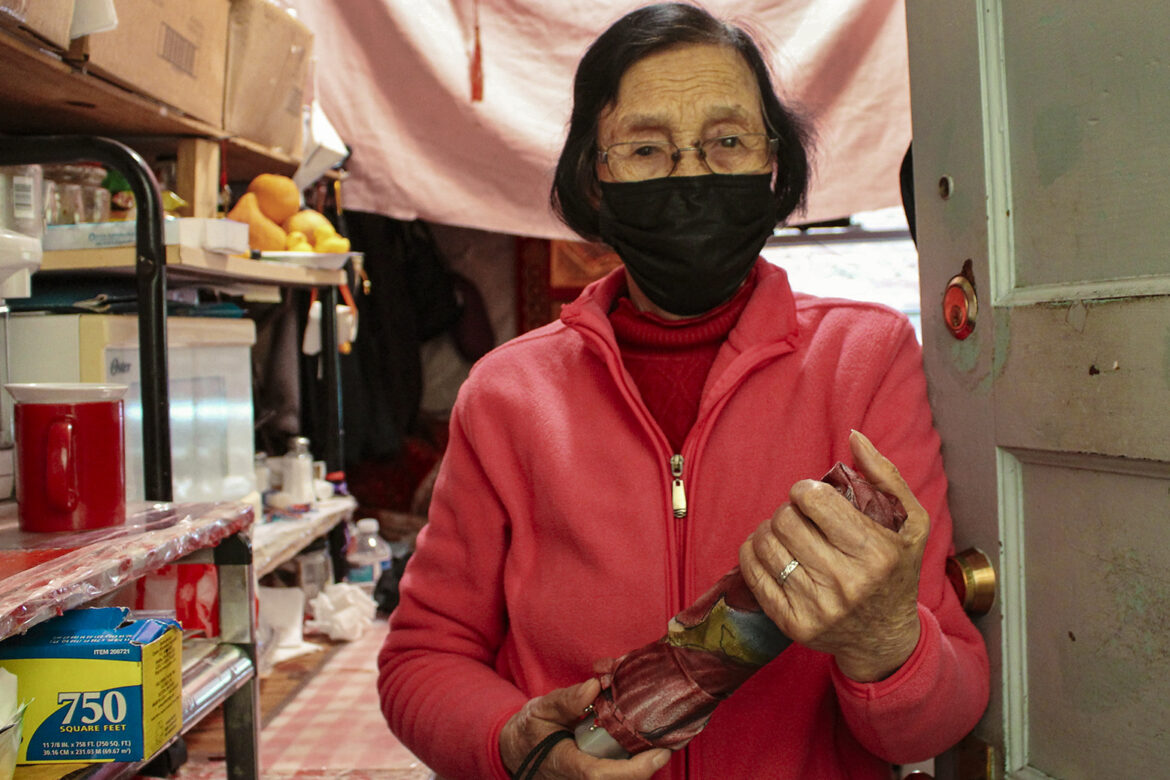
Ambika Kandasamy / San Francisco Public Press
During the severe rainstorms in the Bay Area this past winter, Kuang says she did not go out to get medications or groceries until the downpour lessened. When asked what support she had during the rain, she holds up an umbrella.
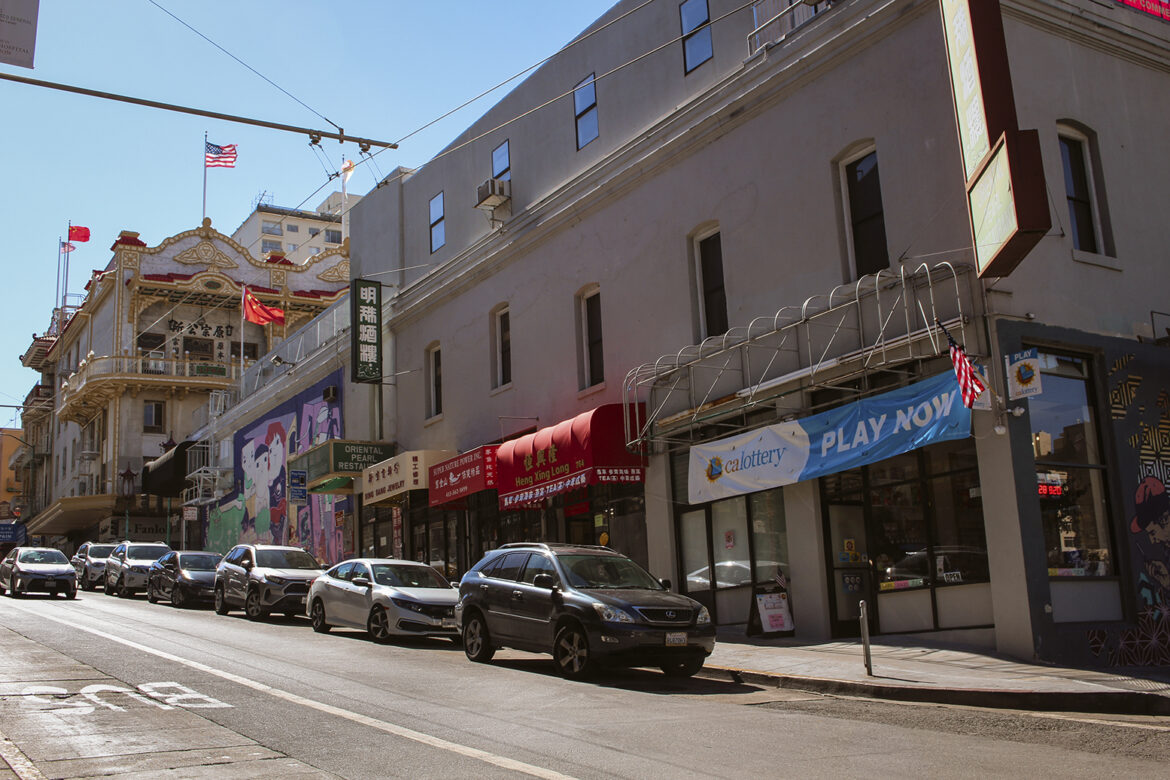
Ambika Kandasamy / San Francisco Public Press
For older residents in Chinatown, especially those who have trouble with mobility, walking up the hills in their neighborhood to get food, medications and other supplies could be dangerous during heavy rains. One single-room occupancy tenant told the Public Press that arranging grocery deliveries for older neighbors during those times would be helpful. Community organizations and city agencies report that scaling up support services and creating climate-resiliency infrastructure continues to be difficult due to funding constraints.
Yesica Prado edited the photos for this piece. Zhe Wu translated the interviews with residents in single-room occupancy housing in Chinatown who spoke Taishanese and Cantonese.
About the Project
Older adults are among those most at risk during climate change-driven weather disasters. This series examines the physical and mental health effects of these events on older people and explores how these challenges are unfolding in San Francisco’s Chinatown, a neighborhood considered by the city as particularly vulnerable to the hazards of climate change.
- Q&A with Dr. Andrew Chang on the physical toll of climate change on older adults
- Q&A with Dr. Robin Cooper on the emotional toll of climate change on older adults
- Q&A with Eddie Ahn on how Brightline Defense takes on air pollution and environmental justice concerns
- Long-form story: Protecting Chinatown’s Older Adults From Climate Change Disasters Requires More Funding, Nonprofits Say
- Photo essay: For Chinatown’s Older Residents in Single-Room Occupancy Buildings, Climate Disasters Pose Greater Risks
This project was produced with the support of a journalism fellowship from the Gerontological Society of America, the Journalists Network on Generations and the Archstone Foundation.
